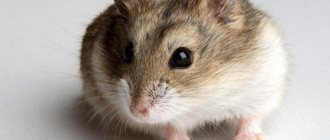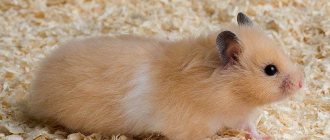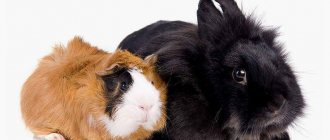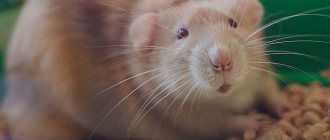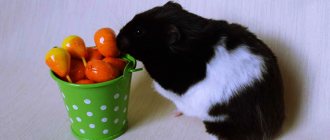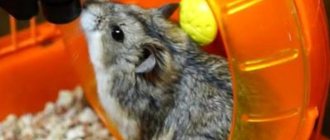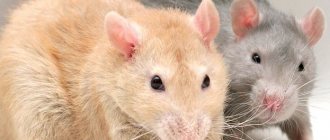A hamster is a cute pet. Its content has many advantages, but many who want to buy this animal are often faced with the choice of which hamster is better to get: Syrian or Djungarian? The fact is that these breeds are the most common in Russian homes. As representatives of the Khomyakov family, they are, of course, similar. But they also have several important differences, which may be decisive for the future owner when choosing a pet.
How do the carriers of these two breed qualities differ from each other, and which hamster is better to buy: Syrian or Djungarian, we will tell you in this article.
First, let's define the description of these two types of ornamental rodents.
Djungarian hamster. Appearance
This is a very miniature animal with a pointed muzzle and small ears. Its body weighs no more than 50 grams with a total length of no more than 10 cm. As a rule, it is covered with thick short fur, which in natural conditions is usually gray-brown in color with white patches. A blackish or dark gray stripe is expressed along the line of the spine - this is a common species characteristic for dzungarians. The belly, paws and inside of the animal's ears are usually white or light. The eyes are bulging and black.
The domestic Djungarian hamster differs in color from the wild one. There is a usual set of colors for domesticated animals: this is standard (gray-brown body with a white belly), sapphire color (bluish-gray, also with a light belly), pearl (whitish with gray splashes) and tangerine (cream with a red tint).
But you need to take into account that individuals of this species molt in winter and become almost white - because of this, and also because of their small size, the dzhungarika is sometimes called the Russian winter dwarf hamster. Nature has provided for the hamster to be invisible in the snow, because dwarfs do not hibernate and in winter conditions must also take care of food. However, it should be noted that in captivity, molting with color change rarely occurs.
Which hamster is best for a child?
Children love to watch hamsters stuff their cheeks full of food and carry supplies back to the house. The main burden of care falls on the shoulders of the parents, but the child can be entrusted with minor responsibilities. Changing water or grain will teach responsibility and bring understanding that a hamster for a child is not a toy, but a living being.
Interesting! Psychologists believe that children simply need a pet. Caring for animals teaches them kindness and compassion.
Hamster breed
It is better to choose a hamster according to the age of the child. For children under 5 years old, large breeds are suitable and will not be afraid of a tight hug. It is better for a schoolchild to get a small hamster.
As for colors, you can completely rely on the choice of children:
- Syrian hamster. A large breed, whose representatives grow up to 12–18 cm. Affectionate animals willingly play with children. They can be taught simple tricks. Stores sell Syrians in a wide variety of colors: cream, gray, pearl, brown. The Syrian hamster requires spacious housing, so you will have to purchase a large cage with your pet. The animals are very clean and carefully look after their fur.
- Djungarian hamster. The dwarf breed grows no more than 10 cm in length, and this includes the tail. Pets are not picky about food and love to communicate with children. The character and behavior have made the Dzhungarika the most popular domestic rodent breed. But it should be remembered that the animals are very nimble and shy. A Djungarian hamster can easily sneak into any crack, and then the whole family will have to participate in the search.
Syrian and Djungarian hamster
Important! The life of a dwarf is very short, and children will enjoy their furry friend for a maximum of 3 years.
Boy or girl
The gender of the pet does not really matter if the hamster lives in a cage alone. The behavior of males and females has its own characteristics, but is not fundamentally different. If a family has a couple of different-sex pets, then adults should be prepared for frequent additions to the hamster family.
Interesting! In one litter, from 2 to 9 hamsters are born. But there are cases when a fertile female gave birth to 18 cubs.
The male hamster is larger in size than the female. He very carefully guards his territory, so he constantly marks it. The male's cage must be cleaned frequently to prevent the smell from spreading throughout the apartment. Male hamsters willingly play with children and are trainable.
Females love affection and attention, but they more often have health problems associated with the reproductive organs.
Behavior and contact
A pet for children should be active, sociable and not aggressive. Age and breed are the main criteria when choosing a hamster. Experts recommend buying young rodents that are 1–2 months old. At this age, they no longer need maternal care and easily perceive a change of environment.
Hamsters prefer a nocturnal lifestyle, so it is better to plan a visit to the pet store in the evening. In the morning hours, sleepy rodents are unlikely to seem cute and friendly to their future owners.
A short observation will help determine the pet's character. If he runs randomly around the cage in search of cover, then most likely the animal is scared. Its skin can easily tell about the character of a rodent: fighters have numerous scars on their bodies and heads.
Hamsters, especially Djungarian ones, experience an irresistible urge to wander. They are constantly trying to bite through the bars of the cage, pick the locks, or dig into the cage. Children can be tasked with checking the hamster's house for such surprises.
Interesting! The rodent can be left on its own for 2–3 days. It is enough to take care of a double portion of food in the feeder.
A hamster is a good and devoted friend, the main thing is to teach children to handle the pet carefully.
Where does it live in nature?
Many people are interested in where and how the Djungarian (or Sungur) hamster lives in wild natural conditions. This interest is not just caused by curiosity: after all, in order to provide the best living conditions for an animal in captivity, it is important to know what the lifestyle of its wild ancestors was like.
In the Russian expanses, this type of hamster is very common, for example, in Khakassia, in some regions of Kazakhstan, and in the steppes of Southwestern Siberia. For its habitat, this rodent, due to its food preferences, chooses semi-deserts and steppe spaces where cereal herbaceous plants grow.
Djungarian hamsters are most active at night. They live in minks, which necessarily have several entrances and holes, as well as a nesting chamber.
The life expectancy of this rodent in the wild is short - no more than two, sometimes three years. At home, it usually increases, but only slightly.
Content Features
Although many owners do not listen to this opinion, Djungarians should not be placed several times in one cage. However, as evidenced by the experience of keeping this species in captivity, it is best if there is only one animal in one cage.
Keeping a male and female together will result in offspring. If the animals are not further planted, their numbers will grow exponentially, and instinct will force the adults to eat their young. Usually this immediately causes understandable rejection among the owners, but here it should be understood that hamsters in their natural environment do not live in families, but in single individuals in each area, and captivity conditions cannot change this. Therefore, if a female hamster has offspring, they should be placed separately upon reaching a certain age (as soon as young hamsters are able to feed on their own).
It is also not recommended to keep two same-sex hamsters together: in this case, aggression towards each other is possible, both in females and males. In addition, living together in the same cage can cause stress in each of the inhabitants, and this will inevitably affect their owners as soon as they try to communicate with them.
It is best to feed Djungarian hamsters in captivity with special food.
It is worth noting that pet stores quite often sell animals of hybrid origin under the guise of a Djungarian hamster. Such individuals may have an unstable psyche and a tendency to various diseases, including diabetes. A conscientious breeder will always provide you with a pedigree upon request.
Now let’s look at materials about another, no less popular human companion animal.
Hamster breed
The most popular domestic types of hamsters:
- Syrian;
- Dzungarian;
- Campbell;
- Roborovsky.
Each species has its own individual characteristics. They differ in size, color, behavior and lifespan.
Syrian hamster
The body length is on average 15 cm, some individuals reach 20 cm. Body weight is 100-200 grams. They live on average 2-3 years; many individuals, with good care, can live up to 4 years.
Of all the species, the Syrian hamster is considered the largest. For children 6-8 years old, this type will be the best choice as it is easy to hold. Small species of hamsters are very nimble and can slip out.
Pros of being a Syrian:
- Large, easy to pick up and hold in your hands;
- Live longer than other domestic hamster species;
- Many different colors;
- There are many subspecies that differ in coat length;
- Friendly, do not show aggression;
- They are easy to tame and quickly make contact with humans.
The downside is that they take up more space. Large hamsters require a slightly larger cage than smaller species.
According to the length of their fur, Syrian hamsters are divided into:
- Long-haired;
- Short-haired;
- Hairless.
If you choose a long-haired Syrian, then his coat must be looked after daily. Once a day, use a special brush to comb out tangles and debris from the wool.
Djungarian hamster
Body length 10 cm, weight 50 grams. Djungarian hamsters live on average 1.5-2 years, rarely living up to 3 years.
Djungarians are very small and nimble hamsters. Children who are too young should not choose them, since such small hamsters are difficult to hold in their hands. Djungarians are very shy, they should be tamed immediately, otherwise adults may bite.
You can keep one hamster in one cage; they do not get along well with same-sex relatives. Djungarians are susceptible to diabetes, so their diet must be carefully monitored.
Roborovsky
Body length 5 cm, weight 30 grams. They live on average 1.5-2 years.
One of the advantages of having such a hamster is that this is the only species that gets along well with other individuals in the same cage.
Among the disadvantages of the establishment, these are the smallest hamsters, which are not easy to hold in the hands even of adults. This is also a rare species of hamster that is difficult to find for sale.
Campbell
Body length 8 cm, weight 30 g. Lifespan 2 years.
A very rare species of hamster that is rarely sold in pet stores. Can be found for sale from breeders in nurseries. If you still manage to find such a hamster, you should check that the hamster is tame. Among Campbell's hamsters there are often wild and untamed individuals.
If you choose a hamster for children, then you should pay attention to the largest types of hamsters. Little hamsters are very nimble. It is very difficult for children to hold them in their hands, which is why hamsters often break out of their hands and fall from a height. Such falls often result in injuries and bruises. Also, a hamster can run away, but finding and catching such a baby is quite problematic.
Syrian hamster. Description
This representative of the Khomyakov family is larger than the Djungarian - together with the tail (1.5 cm), the body length of this rodent is 13 (in rare cases, up to 18) centimeters. In this case, the weight can reach 120-125 grams. Representatives of this species, also called Golden hamsters, are distinguished, respectively, by the golden or brownish color of their thick, soft fur. In the process of domestication and selection, the variability of coat color has expanded significantly: Syrian hamsters can be, in addition to the main colors, black and silver-white, as well as bicolor and even tortoiseshell.
A feature that is assigned to all hamsters in animal science, but is especially noticeable among Syrians, is the presence of cheek pouches. They are designed to transport food that the animal obtains while exploring the surroundings to its burrow. In addition, if there is a lot of food, this hamster also tends to store it in its bags. When full, the sacs sag from the cheeks to the very shoulders of the animal, which is why the name of this hamster is translated from Arabic as “Mr. Saddlebags.”
The remaining features that can be distinguished when comparing the Syrian hamster and the Djungarian hamster are the former’s prominent protruding ears, a slightly more elongated muzzle, and the absence of a dark dorsal stripe.
Coat types
Through the work of breeders, four separate subspecies of Syrian hamsters have been bred. These subspecies are distinguished by the following types of coat. The most common and common is the short-haired type. With such plush-like fur, different colors look best.
Long-haired Syrians have also been bred, another name for which is Angora. Males of this subspecies have a kind of “skirt” of long (8 to 10 cm) hair in the lower part of their body. However, the females look like ordinary Syrians, perhaps a little fluffier. In foreign pet stores, this variety is called “Teddy Bear hamster”.
The Satin or Satin Syrian hamster is distinguished by fur with a special, almost glossy sheen. This effect was achieved by breeding a new variety whose fur contained hollow hairs. However, individuals of Satin Syrians cannot be mated with each other, since this may result in the birth of animals with sparse hair or its complete absence.
Rex (or Curly) hamsters give the impression of being disheveled animals - the hairs in their lush outfit are slightly curled. In addition, rexes also have curled mustaches. This variety can be either short(-) or long-haired.
The last variety is represented by Hairless Syrian hamsters. They are characterized by a complete absence of hair. However, animals with such a fixed mutation sometimes still have a certain velvety appearance and even short “whiskers”.
Unfortunately, representatives of hairless Syrians are quite sickly, they require special care: in unfavorable temperature conditions, some owners even “dress” them. In addition, the life expectancy of a hairless Syrian hamster is half that of normal.
How to choose a hamster for a child: general tips
Hamsters are sold at any bird market. A large number of animals in one place causes the spread of infectious diseases and parasites. A cage standing in frost or draft leads to colds and hypothermia. Therefore, preference should be given to specialized stores where animals receive proper care.
The rodents in question are active at night, so to choose a healthy hamster, you should go to the pet store in the evening. A healthy rodent actively moves around the cage, runs on a wheel, digs in food and bedding, and does not limp. When a hamster is not sleeping, it should not show apathy or freeze in a stupor.
Pay attention to the age of the fluffy. Cubs up to a month old require special care - they need to be provided with enhanced heating and nutrition with special mixtures from a pipette.
After three months, the animal already has formed habits and is difficult to train. Therefore, the optimal age for choosing Syrian or other hamsters is 1 or 2 months.
Conduct a self-examination of the rodent. Take him in your arms - there should be no bald spots or lumps on the body. Signs of a health condition are:
- Smooth and shiny skin without bald spots.
- No nasal or eye discharge.
- Active behavior without obvious signs of overexcitation.
Yellow teeth are normal. This is explained by the characteristics of animal tooth enamel.
Where does it live and what does it eat?
Unlike the Djungarian hamster, the range of this animal is quite limited: it is found in Syrian, Turkish and Israeli semi-deserts. Due to human activities and the species' status as a pest, the Syrian hamster's habitat is in constant decline, and the species is now listed as endangered according to the International Union for Conservation of Nature (IUCN).
Like other hamsters, this one is most active at dusk or dawn. The Syrian is quite mobile: observations by zoologists have shown that during the “night shift” this animal is capable of running from three to eight kilometers. When clarifying which is better - the Djungarian or Syrian hamster - keep in mind that the Syrian is more active, and often this activity manifests itself in the evening, when he begins to run around on the wheel and explore his home in every possible way.
The life expectancy of the Syrian hamster is short, it is the same as that of the Djungarian hamster. This circumstance greatly upsets those who want to have this pet, who are thinking about which is better - a Syrian or a Djungarian hamster.
The diet of the Syrian is much wider: this animal is considered a practically omnivorous rodent, because it is able to feed not only on cereal seeds and all types of nuts (which, by the way, are prohibited for Djungarian hamsters), but also on small insects. Of the nuts, however, almonds and fruit seeds are contraindicated for Syrians.
Boy or girl? Character traits
If you don’t know what kind of rodent to get so that it gets along with kids, pay attention to gender. Unlike rats or other small pets, hamsters are not sterilized, so due to hormonal characteristics, the character and behavior of a male or female differs.
- Boys are larger than girls, they are calmer, more patient and affectionate, but they “mark” their territory, so an unpleasant odor if their home is not cleaned in a timely manner is guaranteed.
- Hamsters are more mobile and active, but at the same time they are also “hot-tempered”, especially during pregnancy or immediately after birth. They can injure the male, so they should be removed immediately after fertilization. In addition, females sometimes experience health problems related to the reproductive organs (endometritis).
Character, size, habits - all this can influence which hamster is best for a child.
Content
Like the Djungarian hamster, the Syrian is considered a territorially intolerant animal: the cubs should be separated from their mother as soon as they are four weeks old. Once the young animals reach eight weeks of age, in order to avoid conflicts, they should not be kept with each other either.
Remaining in the burrow, these hamsters behave like active housewives, sorting and sorting through food supplies, separating those that have spoiled.
In order for the hamster to move more, it is worth installing a special wheel in the cage. Well, all types of hamsters need wooden blocks or pieces of mineral stones to grind down their teeth.


